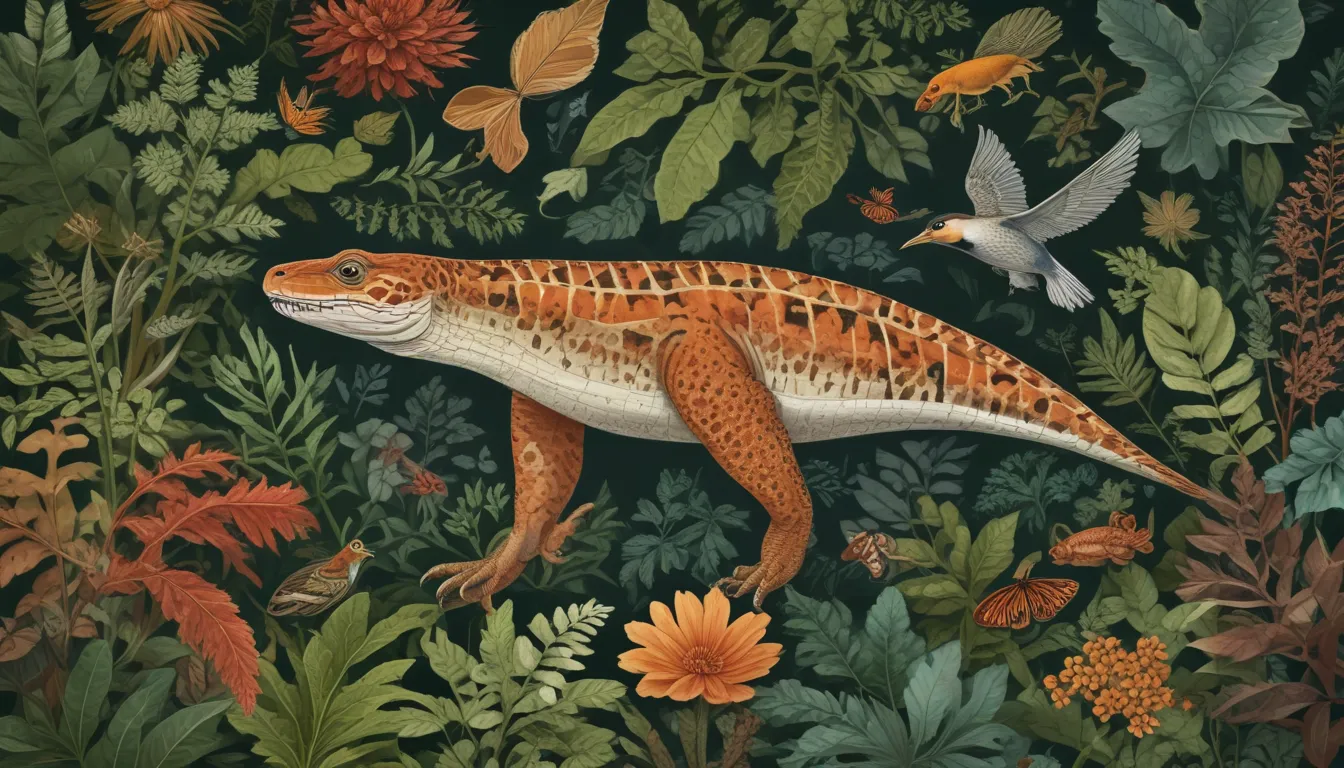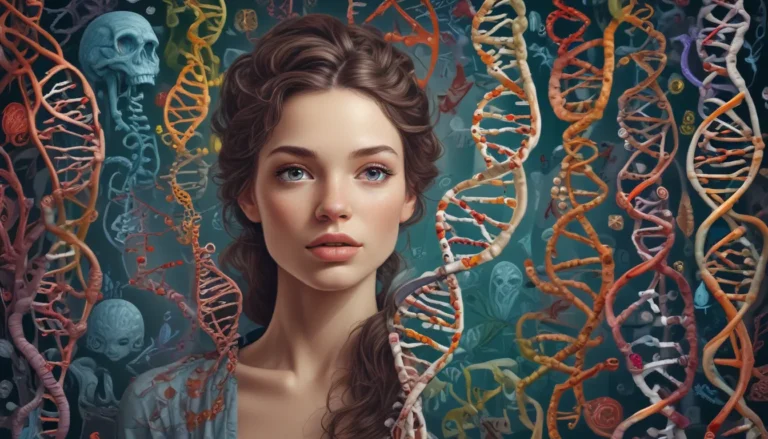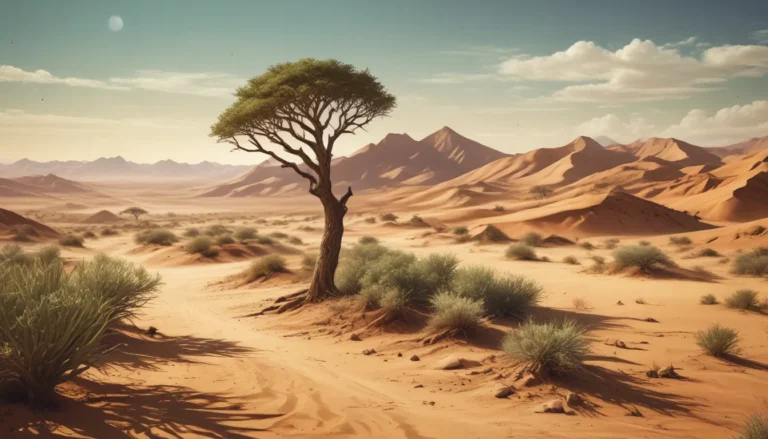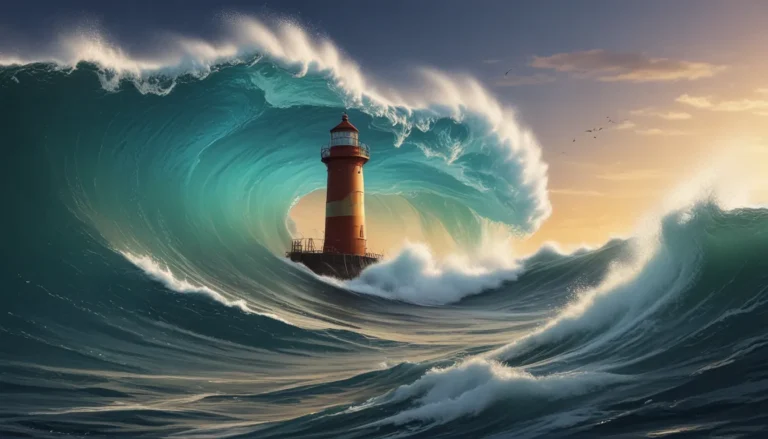A Note About Images: The images used in our articles are for illustration purposes only and may not exactly match the content. They are meant to engage readers, but the text should be relied upon for accurate information.
Welcome to the captivating world of conservation biology, where scientists and researchers work tirelessly to preserve our planet’s biodiversity. By combining elements of biology, ecology, genetics, and environmental science, conservation biology aims to understand and address the challenges facing our fragile ecosystems. In this article, we will delve into ten intriguing facts about conservation biology to shed light on the vital work being done to ensure the survival of species, ecosystems, and ultimately, our own future on this planet. From the multifaceted nature of the field to the crucial role of technology in conservation efforts, let’s embark on a journey to explore the wonders of conservation biology and inspire action in protecting our natural world.
Understanding the Essence of Conservation Biology
Conservation biology is a multidisciplinary field that blends principles from ecology, genetics, anthropology, and other sciences to study the preservation and restoration of biodiversity and ecosystems. By taking a holistic approach, conservation biologists strive to understand and solve pressing environmental challenges, paving the way for innovative solutions in conservation efforts.
Protecting Species and Ecosystems: The Core Mission
At the heart of conservation biology lies the goal of preventing species extinction. Conservation biologists work tirelessly to identify and safeguard endangered species and their habitats through strategies like captive breeding programs and habitat restoration. By doing so, they aim to uphold biodiversity and ensure the long-term survival of species for generations to come.
Embracing Ecosystem Services in Conservation Efforts
Ecosystem services, such as pollination, water purification, and carbon sequestration, are indispensable for human well-being. Conservation biologists study the impact of human activities on these services and develop sustainable strategies to manage ecosystems for the benefit of both nature and people. Through their work, they aim to maintain a delicate balance that sustains life on Earth.
Tackling the Challenge of Climate Change
The specter of climate change looms large over biodiversity, threatening ecosystems worldwide with rising temperatures, altered precipitation patterns, and more frequent extreme weather events. Conservation biologists play a pivotal role in studying the effects of climate change on ecosystems and devising adaptation strategies to mitigate the negative impacts on species and habitats. In the face of this global crisis, their work is more crucial than ever.
Preserving Genetic Diversity with Conservation Genetics
Conservation genetics emerges as a vital branch of conservation biology, focusing on understanding and safeguarding genetic diversity within and between populations. By analyzing the genetic makeup of endangered species, scientists can develop effective conservation strategies to prevent inbreeding depression and preserve the genetic resilience essential for species survival.
Engaging Communities for Sustainable Conservation
Successful conservation initiatives rely on collaboration with local communities. Conservation biologists work hand in hand with communities to raise awareness, build capacity, and promote sustainable practices that support both conservation goals and local livelihoods. By fostering a sense of shared responsibility, they create lasting impacts in conservation efforts.
Unlocking the Potential of Protected Areas
Protected areas, such as national parks and wildlife reserves, serve as crucial havens for conserving biodiversity. These sanctuaries provide a safe refuge for species, facilitate scientific research, and promote ecotourism, which not only bolsters local economies but also supports conservation endeavors. Protected areas stand as beacons of hope for the preservation of Earth’s diverse ecosystems.
Harnessing Technology for Conservation Innovation
The rapid advancements in technology have revolutionized the field of conservation biology. From satellite imagery to DNA analysis and remote sensing, cutting-edge tools empower scientists to study ecosystems on a broader scale and glean valuable insights for conservation planning and decision-making. By embracing technology, conservation biology charts new frontiers in the quest to protect our planet’s natural heritage.
Balancing Conservation with Sustainable Development
Conservation biology champions the harmonious coexistence of environmental conservation and economic development. By integrating sustainable practices into industries like agriculture, fisheries, and forestry, it seeks to achieve a delicate equilibrium between human activities and the natural world. Through sustainable development, conservation biology charts a path towards a more sustainable future for all life forms on Earth.
Embracing Change: The Evolution of Conservation Biology
As our understanding of ecosystems deepens and the impacts of human activities intensify, conservation biology continues to evolve. Adapting to emerging challenges, embracing new methodologies, and striving for innovative solutions, the field remains dynamic and ever-evolving. Conservation biology stands at the forefront of conservation efforts, shaping a more resilient and sustainable future for our planet.
Conclusion: Preserving Earth’s Rich Tapestry of Life
In conclusion, conservation biology stands as a beacon of hope in safeguarding Earth’s rich biodiversity. Through scientific knowledge, research, and sustainable practices, conservation biologists work tirelessly to ensure the enduring survival of species and their habitats. By unraveling the intricate relationships between organisms and their environment, conservation biology paves the way for species preservation, ecosystem restoration, and sustainable development. From wildlife conservation to habitat restoration, the field offers a myriad of strategies to uphold the diversity of life forms on our planet. By supporting conservation endeavors and raising awareness about the importance of biodiversity conservation, we can all play a part in safeguarding our natural world for posterity.
Frequently Asked Questions
-
What is conservation biology?
Conservation biology is a scientific discipline focusing on studying, protecting, and managing Earth’s biodiversity, understanding species relationships, habitats, and factors affecting their survival. -
Why is conservation biology important?
Conservation biology is vital for preventing species and ecosystem loss, promoting sustainable development, managing natural resources, and preserving Earth’s beauty and balance. -
How does conservation biology contribute to species preservation?
Conservation biologists engage in habitat protection, species reintroduction, and captive breeding programs to prevent endangered species extinction and support their recovery. -
What are the major threats to biodiversity?
Major threats include habitat destruction, pollution, climate change, invasive species, overexploitation, and loss of genetic diversity. Conservation biology seeks to address these threats and find solutions to mitigate their impact. -
How can individuals contribute to conservation biology?
Individuals can support conservation by backing organizations, adopting sustainable lifestyles, reducing carbon footprints, promoting environmental education, and participating in citizen science projects. -
Are there global initiatives for conservation biology?
Yes, global initiatives like the Convention on Biological Diversity (CBD) and the International Union for Conservation of Nature (IUCN) work towards global biodiversity protection and conservation. -
How does conservation biology address climate change impact?
Conservation biology studies and mitigates climate change effects on ecosystems and species, advocating for sustainable solutions to combat climate change and its consequences on biodiversity. -
Can conservation biology restore damaged ecosystems?
Yes, conservation biology employs techniques like habitat restoration, reforestation, and ecological rehab to repair damaged ecosystems, reinstating their natural functions and biodiversity. -
Is conservation biology limited to animal protection?
No, conservation biology encompasses protecting all life forms—plants, animals, fungi, and microorganisms—acknowledging the interconnectivity of species and habitats. -
What career opportunities exist in conservation biology?
Careers include roles like conservation scientist, wildlife biologist, environmental consultant, park ranger, conservation educator, or researcher in government agencies, non-profits, research institutions, and academia.
Dive deeper into the intricate world of conservation biology to unravel more marvels and challenges in our quest to safeguard Earth’s precious biodiversity. Explore the interplay of genetic diversity, population dynamics, and bottleneck effects to gain a comprehensive understanding of the complexities at play in conserving our planet’s natural heritage.
Join Us in the Conservation Journey
We are committed to delivering reliable and captivating content to inspire learning and action. Each fact shared on our platform is contributed by users like you, ensuring a diverse range of insights and information. Our dedicated editors meticulously review each submission, maintaining the highest standards of accuracy and authenticity. Trust in our commitment to quality and authenticity as we embark on a collective journey to explore, learn, and preserve the wonders of our natural world. Let’s join hands in the noble cause of conservation biology and work together to safeguard Earth’s biodiversity for future generations.






